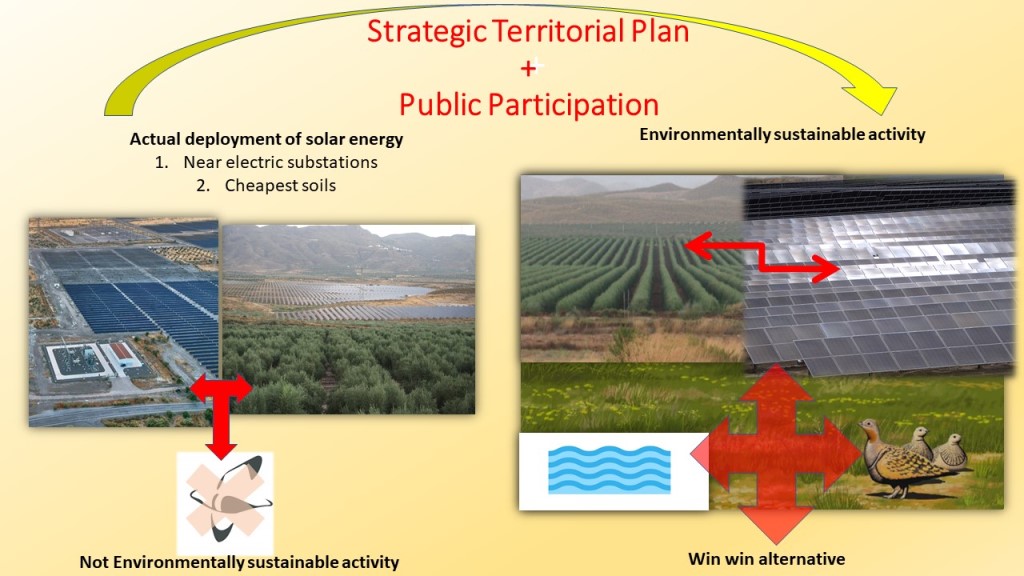Solar energy (SE) is essential for decarbonization of our economy and for energetic transition. Solar energy can be a sustainable economic activity as long as a balance is struck between the benefits it brings to climate change mitigation and the damage it can cause to biodiversity and ecosystems. Here we study this balance in an area with high biodiversity under pressure for installation of numerous photovoltaic plants (PPs). Our results show that developers give priority to the cheapest land close to connection points, while other values (e.g., environmental, landscape) are secondary. The regulatory process carried out by the Administration does not ensure the preservation of natural values, as several PPs with a high impact on important conservation areas have been approved. Experts' allegations provide quality information to the Administration to evaluate and demand changes to the projects presented. Such demands show that companies are willing to relocate plants to land occupied by olive groves. In this way, greater efficiency is achieved in land occupation, as well as shorter evacuation lines, water savings and less environmental impact. Prior strategic territorial planning could have avoided the impact of PPs already built, made the deployment of new PPs compatible with biodiversity conservation, and contributed to improving the management of key resources, such as subway aquifers. The proposed regulatory changes to the environmental assessment procedure (exclusion of renewables and public participation from the procedure) are detrimental, as they will make SE unable to meet the requirements of the Taxonomy Regulation.

